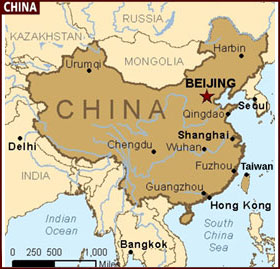Pharmacoeconomic Guidelines: China Mainland
Country/Region: China Mainland

Published PE Recommendations
China Guidelines for Pharmacoeconomic Evaluations (2020)
PDF in English
PDF in English
Information current as of Tuesday, January 9, 2024
Key Features
| Key Features | |
|---|---|
| Type of Guidelines | Published PE Recommendations |
| Title and year of the document | China Guidelines for Pharmacoeconomic Evaluations (2020) |
| Affiliation of authors | Peking University, Fudan University, Tianjin University, China Pharmaceutical University, Ministry of Human Resources and Social Security (MHRSS), PLA 306 Hospital, and many others. |
| Purpose of the document | To provide a general framework and standards for pharmacoeconomic evaluations, serving as a methodological guide for implementing pharmacoeconomic research, and a set of standards for research quality assessment. |
| Standard reporting format included | Yes |
| Disclosure | Yes |
| Target audience of funding/ author's interests | Both public and private payers, healthcare industries, clinicians, and research communities. |
| Perspective | Primarily society and healthcare systems, followed by payers, health care provider, patients. |
| Indication | Primarily approved indications. |
| Target population | Consistent with drug indication, including both insured and uninsured populations, defined by inclusion and exclusion criteria, with epidemiological characteristics of patients (such as age, sex, disease type and severity, presence of comorbidities or risk factors, and socioeconomic status) described. |
| Subgroup analysis | Yes |
| Choice of comparator | Primarily standard care or conventional treatment, followed by placebo. |
| Time horizon | Long enough to capture the major costs and outcomes related to the interventions. |
| Assumptions required | Yes |
| Preferred analytical technique | Primarily CUA |
| Costs to be included | Direct costs, indirect costs, and intangible costs, depending on the perspective. |
| Source of costs | The cost data should come from the local medical and healthcare system. Commonly used sources for cost data include claims databases, disease registries, hospital medical record, published literature, and estimated costs of standard treatments, etc. |
| Modeling | Yes, the decision tree model, the Markov model, the DES, the PSM and the dynamic transmission models could be chosen. The decision should be based on the characteristics of the questions related to decision-making and the rationale for choice should be provided. |
| Systematic review of evidences | Yes |
| Preference for effectiveness over efficacy | Efficacy should be based on the best available evidence (i.e., the best evidence among the clinical efficacy studies and effectiveness studies). For new drugs, if available and applicable, clinical efficacy data from a randomized controlled trial (RCT) is preferred; for drugs which have been in the market for years, when it is not possible to obtain new efficacy data or data is not applicable, effectiveness data from a real-world study should be used. |
| Preferred outcome measure | Efficacy/effectiveness; QALY; WTP |
| Preferred method to derive utility | EQ-5D (EuroQol-5 Dimensions), SF-6D (Short-Form Six-Dimensions), are recommended. |
| Equity issues stated | Yes |
| Discounting costs | Base case: 5%; sensitivity analysis: 0-8% |
| Discounting outcomes | Base case: 5%; sensitivity analysis: 0-8% |
| Sensitivity analysis-parameters and range | All assumptions should be subject to sensitivity analysis. |
| Sensitivity analysis-methods | One-way, multi-way, threshold analysis, analysis of extremes, scenario analysis, Monte Carlo simulation. |
| Presenting results | Reports both in disaggregated and aggregated form. Both results from the base-case analysis and the sensitivity analysis should be presented. |
| Incremental analysis | Yes |
| Total costs vs effectiveness (cost/effectiveness ratio) | Yes |
| Portability of results (Generalizability) | Yes, PE study should address the extent to which both the input data and the results can be applied from one setting to another, both domestically and internationally if cross-country data is involved. |
| Financial impact analysis | Yes, budget impact analysis is recommended when data is available. |
| Mandatory or recommended or voluntary | Voluntary for now to start, expecting to be recommended in a few years. |
Acknowledgement:
Chinese Pharmaceutical Association, China Society for Pharmacoeconomic and Outcomes Research, and ISPOR Beijing Chapter, contributed to the guidelines development and the key feature form.
Additionally, Dr. Yuan Zhang, MSc, PhD, Assistant Professor, McMaster University, Hamilton, ON, Canada, andTianzhou Yu, MS, MPH, Chapter President, ISPOR USC Student Chapter, Los Angeles, CA, USA contributed to the key feature form.